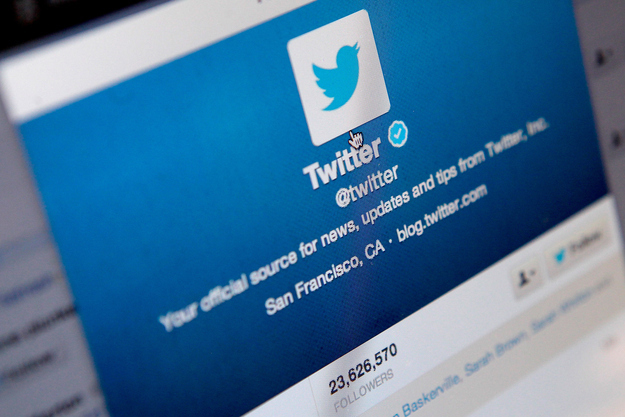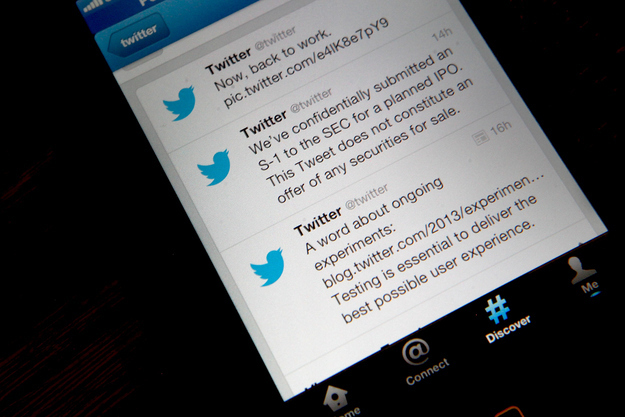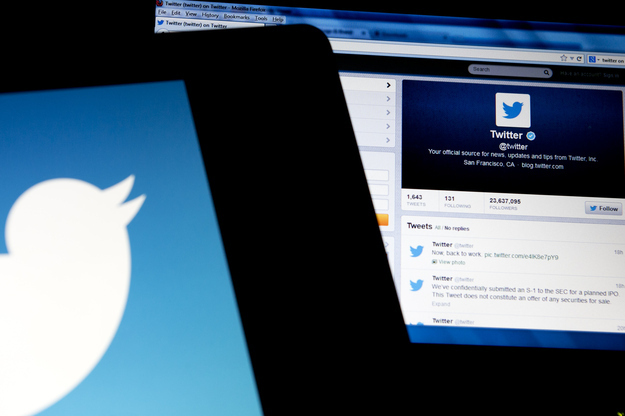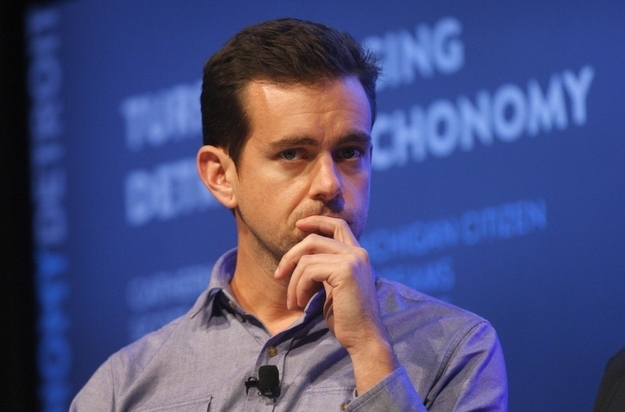
Twitter watchers are holding their breath this week as the company is expected to, according to several reports, reveal its highly anticipated S-1 filing with the Securities and Exchange Commission.
Inside this filing, Twitter will give the public some significant detail about the company, including how much money it has made in recent quarters, how many employees the company has, and who owns how much of the company. While Twitter had already filed documents with the SEC confidentially — which it can do as part of recent legislature passed — companies still have to make their S-1 public as part of the process of the IPO process.
So, why is the collective internet freaking out over it?

It's hard to overstate how big of a deal Twitter's initial public offering will be. Twitter's IPO will essentially bring to a close an era of hotly anticipated social networking IPOs. The follow-up era has included the likes of Pinterest, Airbnb, Square, and Dropbox, but none has quite reached the superstar levels of Twitter. The question for Twitter for the past year has essentially been, "when is Twitter going public?"
Twitter is also going public at a time when web advertising with social networks has essentially gone through a massive shift in favor of advertising through mobile experiences. Twitter is riding a wave of positive sentiment for strong mobile products with an associated mobile advertising acumen — whereas in comparison, Facebook's stock was slaughtered in its early days as a public company for its lack of a mobile strategy as desktop users flocked to their smartphones in droves.
Twitter's S-1 will provide the first look at how its mobile and advertising products have performed.

As with any technology company, if the product is to survive, it has to have a healthy way of making money associated with it to continue funding and sustaining the product. That's what Twitter's S-1 filing will essentially reveal: how much revenue this product is generating, and how much money the company is making — or losing — as it continues to pour money into developing that product. As long as it is still making enough revenue to cover its costs, then Twitter will continue to be where conversations around real-time events happen.
In Twitter's case, that's building out new tools for advertisers — which will help it make even more money — as well as working on the core Twitter product and continuing to grow that at a healthy clip. For example, Twitter has spent a lot of time addressing how to treat "conversations" on Twitter as independent units on the web, as well as when and how to surface them. That requires hiring a lot of intelligent designers, product people, and engineers that are already in high demand in Silicon Valley, which certainly isn't cheap. With a better product, Twitter essentially becomes more widely appealing and the audience continues to grow.
If it is still growing and making a lot more money than it is spending, then that is really attractive for investors and the stock looks very valuable.

That means when Twitter's stock goes public it will probably do very well and investors will want to buy a lot of it. When an investor buys up Twitter stock, it's because it expects that the company will be able to return value to them in the form of something like a dividend or a share repurchase at a later date for more than what they paid to buy the stock. Apple is currently returning about $100 billion in value to its shareholders with a large buyback and dividend program.
Like Facebook, how Twitter's stock performs will essentially be a barometer for the health of the mobile app advertising ecosystem, as well as advertising on social networks as a whole. This is important because smartphone users spend a lot of their time in social networks, so it is a place where advertisers stand to make a lot of money if they can find ways to get users to pay attention to their ads.
Also important, Twitter will reveal things that it thinks could harm its business.

In an area called "risk factors," Twitter will tell investors what it thinks could end up damaging its business. If its business is damaged and it isn't able to make more money, then it can't afford smart engineers and product people and the product could stagnate — leaving an opening for other social networking sites to basically make a more appealing real-time communication network like Twitter.
For example, when Facebook went public, one risk factor it listed was if more users migrated to only using the smartphone app rather than the desktop app. "Growth in use of Facebook through our mobile products, where our ability to monetize is unproven, as a substitute for use on personal computers may negatively affect our revenue and financial results," was the exact wording. That's exactly what happened, and Facebook's stock fell significantly — which raised a lot of questions as to whether social networks were a place that were actually good for advertising.
Luckily, Facebook was able to figure out how to build a good mobile experience and advertise on mobile devices, and its stock price has doubled in the past three months alone following its most recent earnings report. Twitter will probably list other networks taking a share of real-time communication that it has mastered as a risk factor, but often times there are subtle things — like the above from Facebook — that turn out to be very significant to the future of the company.
Twitter will also reveal how much money they are raising, though not right away.

Over the course of the next few weeks, Twitter will release additional, updated S-1 forms which are called S-1/A forms. In the initial S-1 form, a proposed maximum offering price is usually listed, which is serves as a rough estimate to how much the company seeks to raise in order to calculate how much Twitter has to pay the SEC to register for its IPO. The final number may be higher, which was the case for Facebook, or lower, which was the case for Groupon.
The company typically doesn't disclose how many shares it is selling right away, or the price that it is asking investors to pay for those shares. But it has widely reported that Twitter's initial float — the number of shares it is selling — will be lower because most investors don't want to sell their shares, according to AllThingsD. The S-1 may support that theory.
Either way, Twitter will reveal how much of a war chest it wants to actually build, which is important because that money will help it grow and continue to grow its business and team. It also means that they will be able to make bigger acquisitions when it sees the need to do so.
We'll also find out who's getting rich!

The S-1 filing will reveal who Twitter's largest shareholders are, and how much of Twitter they own. While Twitter probably won't give a price for what it's selling its shares at when it goes public, this makes it easy to estimate how much each founder and investor is making as Twitter goes public. This has all sorts of fun implications.
First off, it's always fun to find out how much the hard work (or early work) of some entrepreneurs is actually worth, and it helps other entrepreneurs figure out how much their early time at a company should be worth in a few years. In a situation like Twitter, it would show how much it is worth to be there early, or be there for a long time. The immense wealth of individuals that is revealed once a company like Twitter goes public is often an inspiration for more entrepreneurs to take the step into trying to start a company.
Second, it also shows how much money is over time going to be injected into the startup and technology ecosystem. While many early Twitter employees are already investors in other startups, often when founders and employees become flush with cash they invest money in other startups. This is normally good because it means that entrepreneurs that might not have been able to raise money who have connections with Twitter employees may be able to, but it could also be bad because not all startups are worth giving investments as most startups end up as failures.
